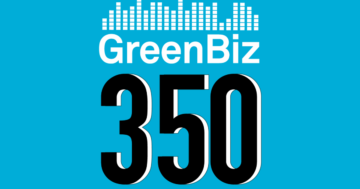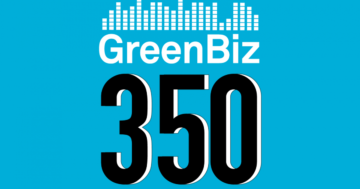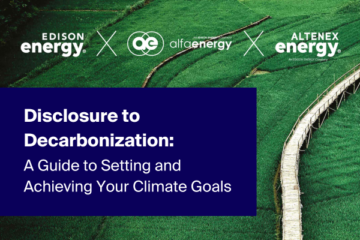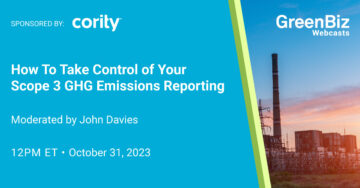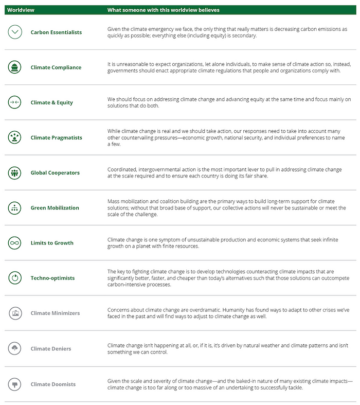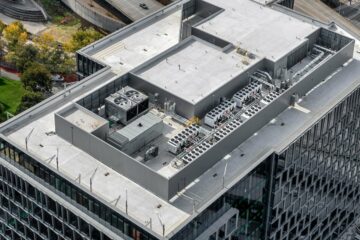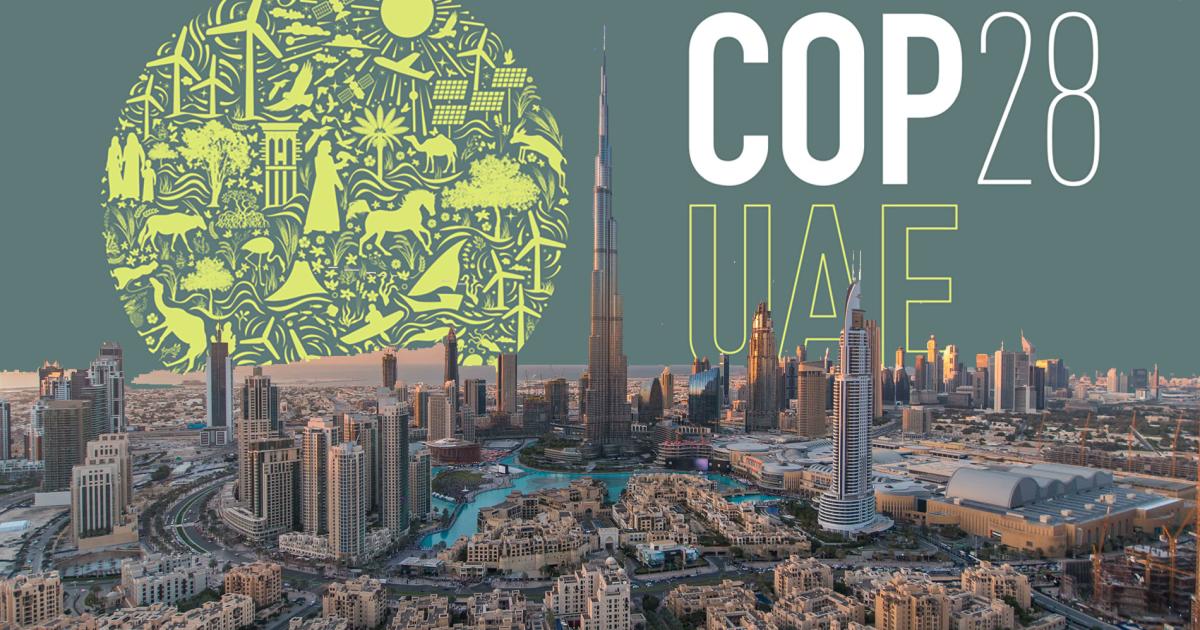
I get a lot of queries about the United Nations COP conferences: Should I go? How do I get to attend? What actually takes place? And so on. Hence, this explainer, originally drafted for the GreenBiz team. It’s not authoritative or comprehensive; merely it’s the perspective of someone who has been going to these gatherings for years.
What is COP?
Every year in the November/December time frame, the U.N., through its United Nations Framework Convention on Climate Change (UNFCCC for, um, short), brings together nearly 200 national representatives (a “Conference of the Parties,” or COP) to assess progress and negotiate terms of global climate agreements. The focus for much of the past decade has been on advancing the goals set forth at COP21 in 2015, which produced the Paris Agreement, a legally binding international treaty on climate change adopted by 196 countries.
The conferences are held around the world (but never in the U.S., for reasons I’m not entirely sure of). They typically extend over two weeks. My first one was COP15, in Copenhagen in 2009. Last year’s event, COP27, was in Sharm el-Sheikh, Egypt; COP28 is coming up in Dubai from Nov. 30 to Dec. 12. The overall theme for COP28 is a “global stocktake” — in effect, an inventory of each nation’s progress to assess progress toward meeting the goals of the Paris Agreement.
Stocktake spoiler alert: It’s not going well.
Each COP is a crowded, confusing and often confounding event, but also a great, if overwhelming, learning experience.
COPs tend to draw 20,000 or more people, although most don’t attend for the entire 12 days. (I typically go for a week or so.)
Note: There’s a separate U.N. COP series, the United Nations Biodiversity Conference, which takes place every other year. Somewhat confusingly, it has its own numbering system similar to that of the climate COPs. The most recent was COP15 in Montreal last December. (Here’s my colleague Pete May’s take on that one.)
How do I get access?
All credentials are issued by the United Nations. It’s a pretty convoluted system, with various types of credentials, each with its own level of access. Most are intended for governments or nongovernmental organizations (a.k.a. NGOs). My colleagues and I typically attend as press and are required to show links to actual articles as part of the application process. However, one can attend a lot of things (see below) without any credentials. For my first COP, in Copenhagen, I had no credentials although I still got to do some cool things.
What actually happens at COP?
I think of COP as a series of concentric circles:
In the center ring is the Blue Zone, which houses the negotiations among the assembled nations about the terms of the treaty, and the progress being made, or lack thereof. Dignitaries, from CEOs to heads of state to celebrities, often make appearances, however briefly, at the negotiations and may speak to the delegates. Most such bigshots, however, spend most of their time in private meetings and events.
The Blue Zone is, understandably, a high-security area that is limited to those with certain credentials (including those of us with press credentials). The Blue Zone also has a massive expo space, where national delegations have pavilions — some small, others quite large, featuring event spaces, private meeting rooms and more. Several NGOs also exhibit here, along with a very small number of companies; it’s unclear which companies get to exhibit there.
The Blue Zone is the closest COP has to a main stage, although the U.N. meetings are often performative and not that enlightening, unless you’re a climate policy nerd. (Much of the actual work happens out of sight in smaller meeting rooms.) There’s lots of parliamentary procedure, not a lot of engaging speeches, with only rare flashes of drama among the delegates.
Many COP days are themed. At COP28, there will be a Finance Day, a Technology and Innovation Day, a Youth Day, an Inclusion Day, an Energy and Industry Day, a Nature Day and several others. Those themes inform, but don’t dictate, some activities that take place in the Blue Zone. In reality, all these topics and more are front and center most days.
Just outside the Blue Zone are demonstrators of various stripes, from indigenous groups to animal-welfare groups (often in animal costume) to those calling for the immediate phase-out of fossil fuels (a big issue, especially this year). They can be anything from entertaining to annoying, depending in part on how much they’re impeding the flow of people and traffic at any given time.
The second ring is the Green Zone, an expo space primarily for NGOs. It’s free and open to the public, albeit just outside the secure area with some level of security.
And, ever since COP18, there’s been a Climate Action Hub, also not far from the Blue Zone and open to those who apply for a pass, where multiple speaker series and other events take place. There is also a Climate Action Innovation Zone featuring climate tech companies and events, and a Resilience Hub with extensive programming. Some, but not all, of these programs are also streamed live globally.
In the third ring are official side events, usually at nearby hotels or conference centers: the World Climate Summit; the Sustainable Innovation Forum; the Climate Innovation Forum; and events from the World Business Council for Sustainable Development, World Economic Forum and many others. Bloomberg, The Economist, The New York Times, Fortune, the Financial Times and The Wall Street Journal frequently hold one- or two-day events. The host country typically hosts a number of official side events or pavilions around town.
The final ring is — well, everything else. Hundreds, possibly thousands, of receptions, panel discussions, breakfasts, lunches, dinners, cocktail parties, meet-ups and more taking place all over the region. At COP27, for example, I attended a sitdown dinner hosted by an Israel-based cellular meat company, a reception hosted by the Los Angeles Cleantech Incubator and a roundtable discussion at the Zero-Carbon Future space, among what seemed a dizzying number of other events. The previous year, in Glasgow, I spoke at a daylong event sponsored by S&P Global, dropped in on a reception at JLL’s local office and attended invitation-only events led by architect and designer Bill McDonough (who often hosts his own networking space at COP). You get the idea: a lot of activity, day and night.
So, should I go?
It’s hard to make a case for or against. Each COP is a crowded, confusing and often confounding event. Logistics can be hugely challenging. (Think of all the dignitaries and their motorcades blocking traffic, not to mention the demand for cabs and transit for the rest of us.) Being resourceful, flexible, spontaneous and patient are all good qualities. One can plan some activities before leaving home, but much of my itinerary happens once I’m on the ground in real time. Unfortunately, there’s no central repository of COP-related event information, at least beyond the official U.N. events.
It’s also expensive to travel to COPs and accommodations can be pricey, and often a fair distance from the action. The cost (and carbon footprint) alone may be hard for many to justify. It’s best to plan early in the year — I typically make my arrangements in late spring to get reasonably priced housing and flights — but good deals may be found closer to the event.
Overall, COP can be a great, if overwhelming, learning experience, an opportunity to meet people from around the world and to delve into a much broader set of issues and life experiences than one typically encounters. It can be a rich and gratifying week or two, which is why I keep going back.
You’ll just need to create your own experience.
- SEO Powered Content & PR Distribution. Get Amplified Today.
- PlatoData.Network Vertical Generative Ai. Empower Yourself. Access Here.
- PlatoAiStream. Web3 Intelligence. Knowledge Amplified. Access Here.
- PlatoESG. Carbon, CleanTech, Energy, Environment, Solar, Waste Management. Access Here.
- PlatoHealth. Biotech and Clinical Trials Intelligence. Access Here.
- Source: https://www.greenbiz.com/article/what-cop-heres-practical-explainer
- :has
- :is
- :not
- :where
- ][p
- $UP
- 000
- 10
- 12
- 20
- 200
- 2009
- 2015
- 30
- 8
- a
- About
- access
- Action
- activities
- activity
- actual
- actually
- adopted
- advancing
- against
- Agreement
- agreements
- Alert
- All
- alone
- along
- also
- Although
- among
- an
- analysis
- and
- Angeles
- animal
- any
- anything
- appearances
- Application
- Apply
- ARE
- AREA
- around
- arrangements
- article
- articles
- AS
- assembled
- assess
- At
- attend
- back
- BE
- been
- before
- being
- below
- BEST
- Beyond
- Big
- Bill
- binding
- blocking
- Bloomberg
- Blue
- briefly
- Brings
- broader
- business
- business news
- but
- by
- calling
- CAN
- carbon
- carbon footprint
- case
- celebrities
- cellular
- Center
- Centers
- central
- CEOs
- certain
- challenging
- change
- circles
- cleantech
- Climate
- climate action
- Climate change
- closer
- closest
- cocktail
- colleague
- colleagues
- coming
- Companies
- company
- comprehensive
- Conference
- conferences
- confusing
- Convention
- Cool
- cop28
- Copenhagen
- cops
- Cost
- Council
- countries
- country
- create
- Credentials
- crowded
- day
- Days
- Deals
- decade
- December
- delegates
- delve
- Demand
- Depending
- Designer
- Development
- dictate
- Dinner
- dinners
- discussion
- discussions
- distance
- dizzying
- do
- Dont
- drafted
- Drama
- draw
- dropped
- Dubai
- each
- Early
- Economic
- Economic Forum
- Economist
- effect
- Egypt
- energy
- engaging
- entertaining
- Entire
- entirely
- Ether (ETH)
- Event
- events
- EVER
- Every
- everything
- example
- exhibit
- expensive
- experience
- Experiences
- Expo
- extend
- extensive
- fair
- far
- Featuring
- final
- finance
- financial
- Financial Times
- First
- flexible
- Flights
- flow
- Focus
- Footprint
- For
- forth
- Fortune
- Forum
- fossil
- fossil fuels
- found
- FRAME
- Framework
- Free
- frequently
- from
- front
- fuels
- future
- gatherings
- get
- given
- Global
- Globally
- Go
- Goals
- going
- good
- got
- Governments
- great
- Green
- Ground
- Group’s
- had
- happens
- Hard
- Have
- heads
- Held
- hence
- here
- his
- hold
- Home
- host
- hosted
- hosts
- hotels
- houses
- housing
- How
- However
- HTTPS
- Hub
- Hugely
- Hundreds
- i
- idea
- if
- immediate
- in
- Including
- inclusion
- incubator
- industry
- inform
- information
- Innovation
- intended
- interested
- International
- into
- inventory
- issue
- Issued
- issues
- IT
- ITS
- journal
- jpg
- just
- Keep
- Lack
- large
- Last
- Late
- latest
- learning
- least
- leaving
- Led
- legally
- Level
- Life
- Limited
- links
- live
- local
- logistics
- los
- Los Angeles
- Lot
- lots
- made
- Main
- make
- many
- massive
- May..
- mcdonough
- Meat
- Meet
- meeting
- meetings
- mention
- merely
- Montreal
- more
- most
- much
- multiple
- my
- National
- Nations
- Nature
- nearly
- Need
- negotiations
- networking
- never
- New
- New York
- New York Times
- news
- Newsletter
- NGOs
- night
- no
- node
- nongovernmental
- number
- of
- Office
- official
- often
- on
- once
- ONE
- only
- open
- Opportunity
- or
- organizations
- originally
- Other
- Others
- our
- out
- outside
- over
- overall
- overwhelming
- own
- panel
- panel discussions
- paris
- Paris Agreement
- Parliamentary
- part
- parties
- pass
- past
- patient
- People
- perspective
- Place
- plan
- plato
- Plato Data Intelligence
- PlatoData
- policy
- possibly
- Practical
- press
- previous
- primarily
- private
- procedure
- process
- Produced
- Programming
- Programs
- Progress
- public
- qualities
- queries
- quite
- RARE
- real
- real-time
- Reality
- reasons
- recent
- reception
- region
- repository
- Representatives
- required
- resilience
- resourceful
- REST
- Reuters
- Rich
- Ring
- Rooms
- s
- S&P
- S&P Global
- Second
- secure
- security
- see
- seemed
- separate
- Series
- set
- several
- Short
- should
- show
- side
- Sight
- similar
- since
- small
- smaller
- So
- some
- Someone
- somewhat
- Space
- spaces
- speak
- Speaker
- Speaker series
- speeches
- spend
- Sponsored
- spring
- Stage
- State
- Still
- stocktake
- streamed
- street
- such
- Summit
- sure
- sustainable
- Sustainable Development
- system
- Take
- takes
- taking
- team
- tech
- tech companies
- Technology
- terms
- than
- that
- The
- The Economist
- The Financial Times
- The New York Times
- The Wall Street Journal
- the world
- their
- theme
- themes
- There.
- These
- they
- things
- Think
- Third
- this
- those
- thousands
- Through
- time
- times
- to
- together
- Topics
- toward
- town
- traffic
- transit
- travel
- Trends
- two
- types
- typically
- u.s.
- unclear
- Understandably
- unfortunately
- United
- united nations
- us
- usually
- various
- very
- Wall
- Wall Street
- Wall Street Journal
- was
- week
- weekly
- Weeks
- WELL
- What
- What is
- which
- WHO
- why
- will
- with
- without
- Work
- world
- World Business
- World Economic Forum
- year
- years
- york
- you
- Your
- youth
- zephyrnet

